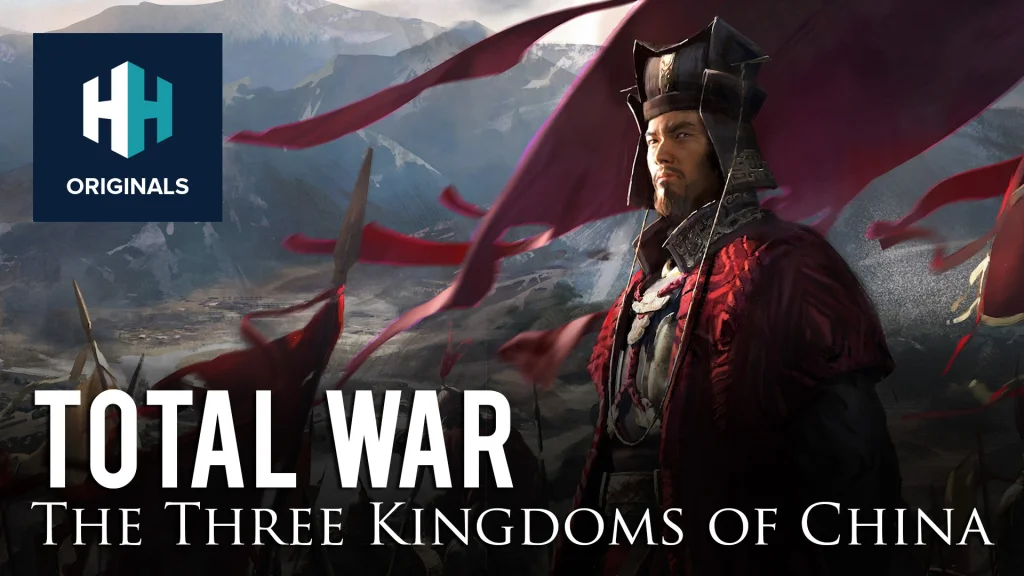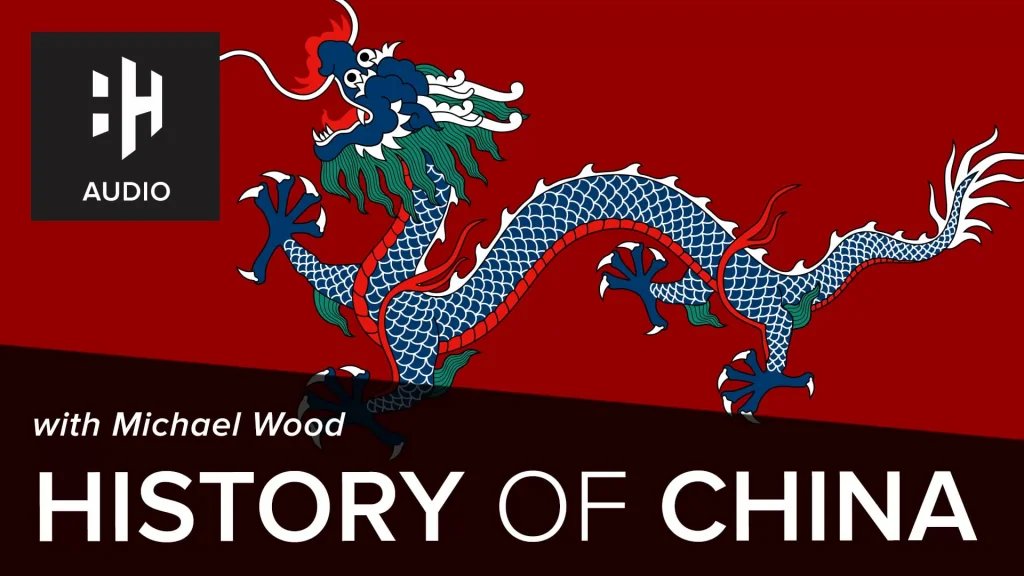[adthrive-in-post-video-player video-id=”wVorZaVk” upload-date=”2022-03-01T14:47:48.000Z” name=”The 13 Dynasties that Ruled China in Order” description=”” player-type=”default” override-embed=”default”]
This educational video is a visual version of this article and presented by Artificial Intelligence (AI). Please see our AI ethics and diversity policy for more information on how we use AI and select presenters on our website.
The history of China is generally presented according to the dynasty to which the period’s ancient rulers belonged. From its inauguration in c. 2070 BC to the abdication of its last emperor in 1912, China was ruled by a series of 13 successive dynasties.
1. Xia Dynasty (c. 2070-1600 BC)
The Xia dynasty was the first Chinese dynasty. It was founded by the legendary Yu the Great (c. 2123-2025 BC), known for developing a flood control technique that stopped the Great Flood that ravaged farmer’s crops for generations.
There is a severe lack of documented evidence about this dynasty and therefore very little is known about the Xia period. Most scholars believe that stories about it were spoken, rather than written. It is not until the Zhou Dynasty, 554 years later, that we see written recordings of this first Chinese dynasty. For this reason, some scholars believe it to be mythical or quasi-legendary.
2. Shang Dynasty (c. 1600-1050 BC)
The Shang dynasty is the earliest recorded Chinese dynasty supported by archaeological evidence. 31 kings ruled much of the area along the Yellow River.
Under the Shang dynasty, there were advances in maths, astronomy, art and military technology. They used a highly developed calendar system and an early form of modern Chinese language.
3. Zhou Dynasty (c. 1046-256 BC)
The Zhou dynasty was the longest dynasty in the history of China, ruling the region for almost 8 centuries.
Under the Zhous, culture flourished and civilisation spread. Writing was codified, coinage was developed and chopsticks came into use.
Chinese philosophy blossomed with the birth of the philosophical schools of Confucianism, Taoism and Mohism. The dynasty saw some of the greatest Chinese philosophers and poets: Lao-Tzu, Tao Chien, Confucius, Mencius, Mo Ti and the military strategist Sun-Tzu.

Zengzi (right) kneeling before Confucius (center), as depicted in a painting from the Illustrations of the ‘Classic of Filial Piety’, Song dynasty
Image Credit: National Palace Museum, Public domain, via Wikimedia Commons
The Zhous also developed the Mandate of Heaven – a concept that was used to justify the rule of kings, who had been blessed by the gods.
The dynasty ended with the Warring States period (476–221 BC), in which various city-states battled each other, establishing themselves as independent feudal entities. They were finally consolidated by Qin Shi Huangdi, a brutal ruler who became the first emperor of a unified China.
4. Qin Dynasty (221-206 BC)
The Qin dynasty marked the beginning of the Chinese Empire. During Qin Shi Huangdi’s reign, China was greatly expanded to cover the Ye lands of Hunan and Guangdong.
Although short-lived, the period saw ambitious public works projects including the unification of state walls into a single Great Wall. It saw the development of a standardised form of currency, a uniform system of writing and a legal code.
The Qin emperor was remembered for his ruthless megalomania and suppression of speech – in 213 BC he ordered the burning of hundreds of thousands of books and the live burial of 460 Confucian scholars.
He was also responsible for building a city-sized mausoleum for himself, guarded by the life-sized Terracotta Army of more than 8,000 life-sized soldiers, 130 chariots with 520 horses and 150 cavalry horses.
5. Han Dynasty (206 BCE-220 AD)
The Han dynasty was known as a golden age in Chinese history, with a prolonged period of stability and prosperity. A central imperial civil service was established to create a strong and organised government.

‘The Gansu Flying Horse’, depicted in full gallop, bronze sculpture. China, AD 25–220
Image Credit: G41rn8, CC BY-SA 4.0
China’s territory was extended to most of the China proper. The Silk Road was opened up to connect to the west, bringing in trade, foreign cultures and the introduction of Buddhism.
Under the Han dynasty, Confucianism, poetry and literature flowered. Paper and porcelain were invented. China’s earliest written record on medicine, the Yellow Emperor’s Canon of Medicine, was codified.
The name ‘Han’ was taken as the name of the Chinese people. Today, the Han Chinese make up the dominant ethnic group in China and the largest in the world.
6. Six Dynasties Period
Three Kingdoms (220-265), Jin Dynasty (265-420), Period of the Northern and Southern Dynasties (386-589).
Six Dynasties is the collective term for the six successive Han-ruled dynasties during this turbulent period. All had their capitals at Jianye, present-day Nanjing.
The Three Kingdoms period has been romanticised repeatedly in Chinese culture – most notably in the novel Romance of the Three Kingdoms.
 Watch Now
Watch Now7. Sui Dynasty (581-618)
The Sui dynasty, although brief, saw great changes in Chinese history. Its capital was held at Daxing, present-day Xi’an.
Confucianism disintegrated as the dominant religion, making way for Taoism and Buddhism. Literature flourished – it is thought that the legend of Hua Mulan was composed during this time.
Under Emperor Wen and his son, Yang, the army was enlarged to the largest in the world at the time. Coinage was standardised across the realm, the Great Wall was expanded and the Grand Canal was completed.
8. Tang Dynasty (618-906)
The Tang dynasty, sometimes known as the Golden Age of Ancient China, was considered the high point in Chinese civilisation. Its second emperor, Taizong, was regarded as one of the greatest Chinese emperors.
The period saw one of the most peaceful and prosperous periods of Chinese history. By the time of the rule of Emperor Xuanzong (712-756), China was the largest and most populous country in the world.
Major achievements were seen in technology, science, culture, art and literature, especially poetry. Some of the most beautiful pieces of Chinese sculpture and silverwork originate from the Tang dynasty.

Emperor Taizong (626–649) receives Gar Tongtsen Yülsung, ambassador of the Tibetan Empire, at his court; later copy of an original painted in 641 by Yan Liben (600–673)
Image Credit: Yan Liben, Public domain, via Wikimedia Commons
The dynasty also saw the only female monarch in the history of China – Empress Wu Zetian (624-705). Wu organised a secret police force and spies across the country, making her one of the most effective – yet popular – monarchs in Chinese history.
9. Five Dynasties Period, Ten Kingdoms (907-960)
The 50 years between the fall of the Tang dynasty and establishment of the Song dynasty were dominated by internal strife and chaos.
In north China, 5 would-be dynasties followed one another in succession. During the same period, 10 regimes dominated separate regions of south China.
Despite the political turmoil, some key developments took place during this time. The printing of books – which had begun in the Tang dynasty – became popular.
10. Song Dynasty (960-1279)
The Song dynasty saw the reunification of China under the Emperor Taizu. Major inventions included gunpowder, printing, paper money and the compass.
Plagued with political factions, the Song court eventually fell to the challenge of the Mongol invasion and was replaced by the Yuan dynasty.

A 12th-century painting by Su Hanchen; a girl waves a peacock feather banner like the one used in dramatical theater to signal an acting leader of troops
Image Credit: Su Hanchen, Public domain, via Wikimedia Commons
11. Yuan Dynasty (1279-1368)
The Yuan dynasty was established by the Mongols and ruled by Kublai Khan (1260-1279), grandson of Genghis Khan. Khan was the first non-Chinese ruler to take over the entire country.
Yuan China was considered the most important part of the vast Mongol Empire, which stretched from the Caspian Sea to the Korean peninsula.
Khan created the new capital city of Xanadu (or Shangdu in Inner Mongolia). The main centre of the Mongol Empire was later moved to Daidu, present day Beijing.
The Mongols’ reign in China came to an end after a series of famines, plagues, floods and peasant uprisings.
12. Ming Dynasty (1368-1644)
The Ming dynasty saw a huge growth in China’s population and general economic prosperity. However the Ming emperors were dogged with the same problems of previous regimes and collapsed with the invasion of the Manchus.
During the dynasty, the Great Wall of China was completed. It also saw the construction of the Forbidden City, the imperial residence in Beijing. The period is also known for its blue-and-white Ming porcelains.
 Listen Now
Listen Now13. Qing Dynasty (1644-1912)
The Qing dynasty was the last imperial dynasty in China, succeeded by the Republic of China in 1912. The Qing were made up of ethnic Manchus from the northern Chinese region of Manchuria.
The Qing dynasty was the 5th largest empire in world history. However by the early 20th century its rulers were weakened by rural unrest, aggressive foreign powers and military weakness.
During the 1800s, Qing China faced attacks from Britain, France, Russia, Germany and Japan. The Opium Wars (1839-42 and 1856-60) ended with Hong Kong ceding to Britain and the humiliating defeat of the Chinese army.
On 12 February 1912, 6-year-old Puyi – the last emperor of China – abdicated. It brought an end to the thousand-year imperial rule of China and marked the beginning of republic and socialist rule.













